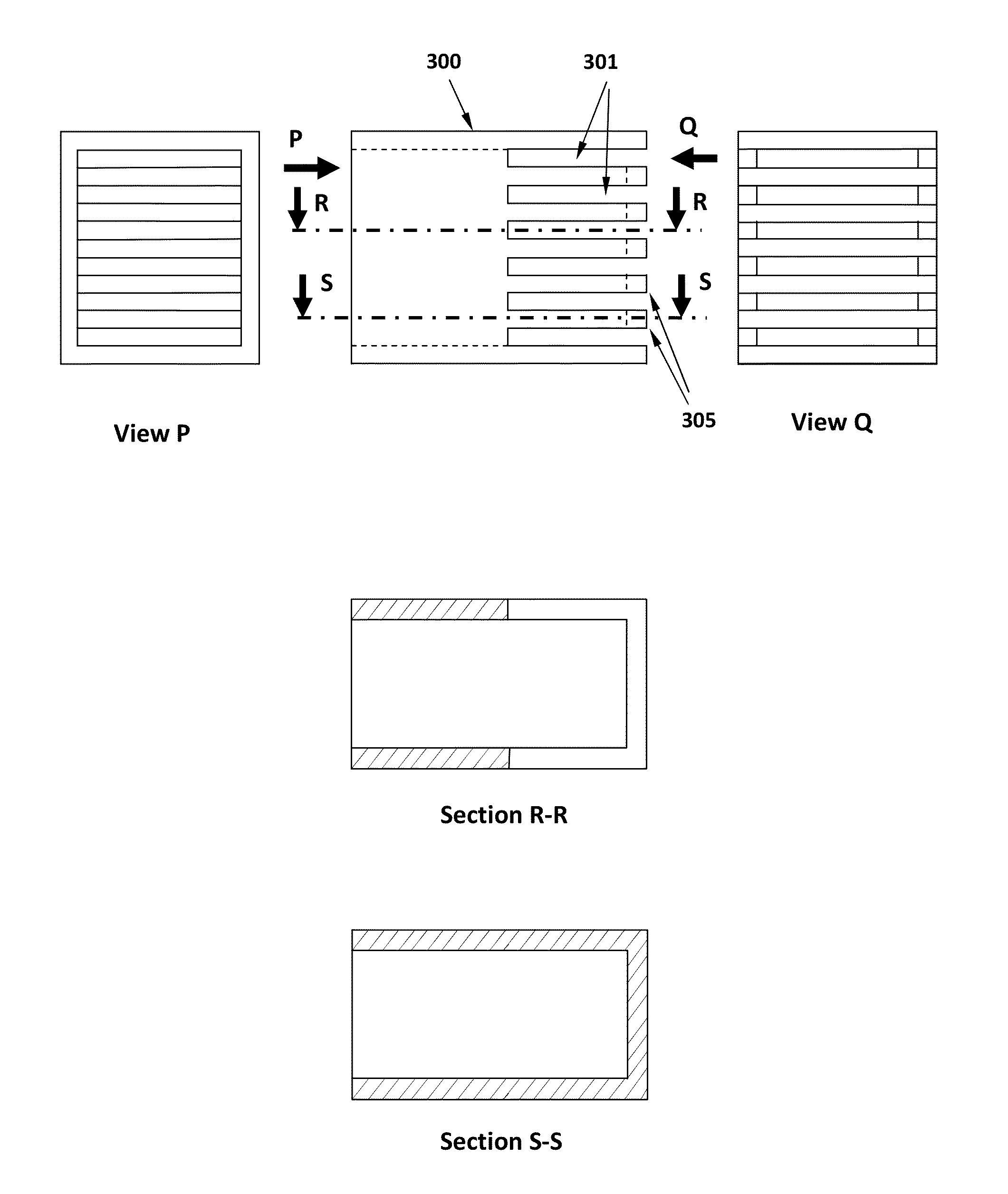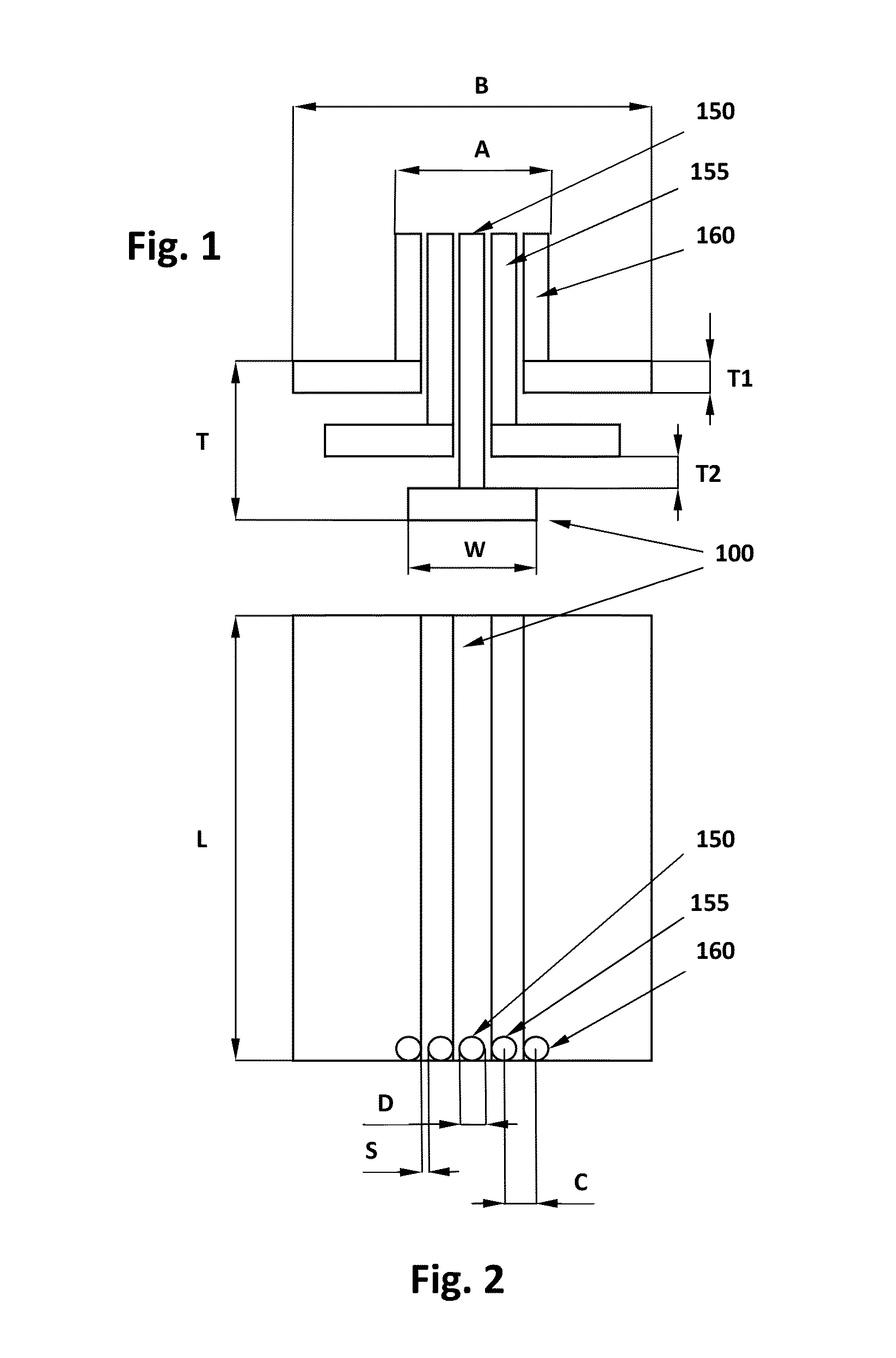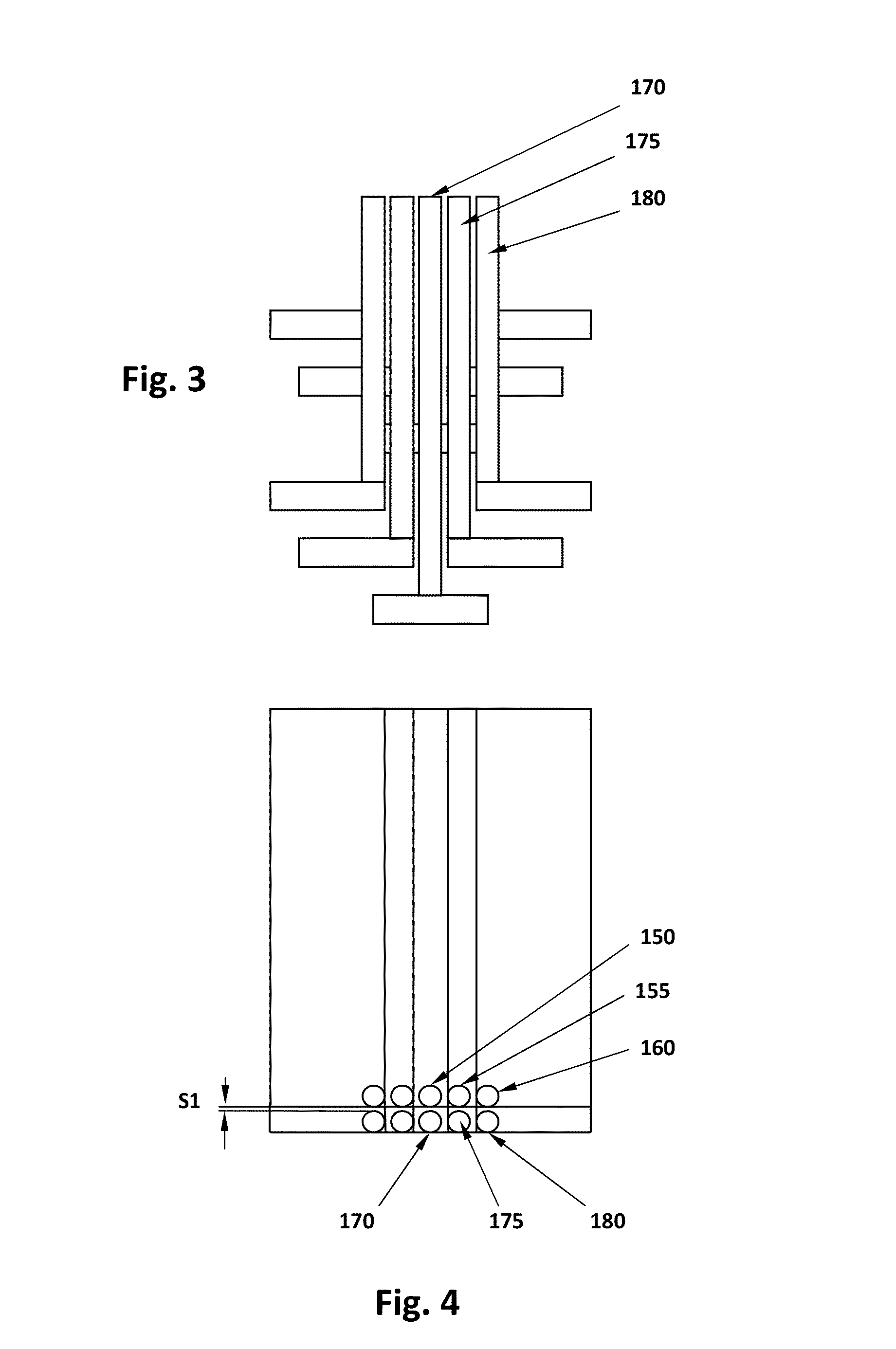Wearable tactile display
a tactile display and wearable technology, applied in the field of tactile display devices, can solve the problems of difficult miniaturization, difficult embedding, and achieving close spacing, and achieve the effects of realistic perception and feeling, easy movement, and easy transportation
- Summary
- Abstract
- Description
- Claims
- Application Information
AI Technical Summary
Benefits of technology
Problems solved by technology
Method used
Image
Examples
Embodiment Construction
[0026]An embodiment of the invention is illustrated in FIG. 1 wherein a piezoelectric element 100 is placed at the bottom of a stack of similar overlapping piezoelectric elements arranged at different planes one over another. The piezoelectric element used in the embodiment is W wide measuring 3.2 mm (0.125 inch), has thickness T1 measuring 0.51 mm (0.02 inch), and length L measuring 31.8 mm (1.25 inch) and is manufactured by Piezo Systems Inc, Woburn, Mass. Other sizes and / or makes may be used. The Figure is a front elevation view as seen from the end side of the stack where the cantilever piezoelectric elements are free to move in vibratory motion in a direction up and down normal to the planes in which the elements are laying. In the illustrated configuration, one piezoelectric element is at the bottom of the stack with a vibratory stimulation pin 150 placed very close to the tip of the element as can be seen in the top view of the arrangement depicted in FIG. 2. The pin shown is...
PUM
 Login to View More
Login to View More Abstract
Description
Claims
Application Information
 Login to View More
Login to View More - R&D
- Intellectual Property
- Life Sciences
- Materials
- Tech Scout
- Unparalleled Data Quality
- Higher Quality Content
- 60% Fewer Hallucinations
Browse by: Latest US Patents, China's latest patents, Technical Efficacy Thesaurus, Application Domain, Technology Topic, Popular Technical Reports.
© 2025 PatSnap. All rights reserved.Legal|Privacy policy|Modern Slavery Act Transparency Statement|Sitemap|About US| Contact US: help@patsnap.com



